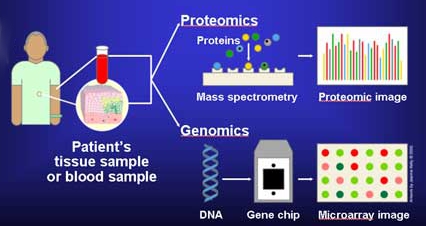Topic: Molecular diagnosis is obligatory for infectious diseases
View Point 1:
Over the past decade, there has been an explosion in the use of molecular tests to diagnose and manage infectious diseases. HIV is a prime example of an infectious agent whose diagnosis at least in the acute stage, susceptibility testing and management are all dependent on molecular diagnostics. The ability to accurately diagnose a plethora of respiratory pathogens quickly, simply, and relatively inexpensively compared to traditional methods is becoming a reality. Direct sequencing and microarray analysis holds a great promise for directly detecting a wide variety of organisms from clinical specimens.
In the context of infectious diseases, the strength of molecular diagnostic tools lies in identifying specific organisms. For example, a lymph node may be consistent with cat-scratch disease (CSD), but the pathologist wants to rule out any other potential causes. A PCR test for Bartonella henselae, the specific bacterium that causes CSD, would be entirely suitable – and a conclusive result would either rule in or rule out CSD.
However, now that we can increasingly use broad-range assays that can detect multiple organisms simultaneously, things aren’t so straightforward. The use of 16S ribosomal RNA gene sequences – present and highly conserved in nearly all bacteria – has opened new doors in terms of detecting multiple bacterial species in a single sample. The molecular amplification method can be applied to a number of different samples, including cerebrospinal fluid, and both fresh and formalin-fixed surgical pathology specimens. Because it’s essentially a PCR test, once the 16S gene is amplified in a sample, it can be sequenced to identify the specific bacteria that are present.
This broad-range test is ideal in a number of scenarios. For example, if a patient has received antibiotics, the bacteria may not grow in standard microbial culture. This is particularly important for patients who have diseases such as infective endocarditis. The 16S rRNA based test can help determine which bacteria are present and therefore which specific antibiotics to use.
Molecular methods can also provide a more rapid diagnosis of etiology than is possible with culture, with results available within hours, if the assay can be performed locally. Many infectious agents cannot be grown by standard culture methodologies (e.g., Mycoplasma pneumoniae) or are fastidious (e.g., Bordetella pertusis), leading to frequent false-negative results. Some other organisms grow very slowly (e.g., Mycobacterium tuberculosis) such that culture results are not available for weeks.
Most clinical microbiology laboratories cannot afford to offer virology services owing to the high expense of performing tissue culture because it is labour intensive, requiring highly skilled laboratory personnel and the purchase of tissue culture cell lines every week that may not be used. Even when available, virus culture typically requires 3 to 10 days for results, depending on the particular virus. However, for the vast majority of bacterial pathogens culture still remains the gold standard of diagnosis, typically yielding a microbiological diagnosis in 1 to 3 days followed by antibiotic susceptibility results. Molecular methods to assay for resistance genes are being developed for some organisms, but are generally not available at this time.
It is clearly evident that the age of molecular diagnostics is now upon us, with real-time PCR becoming the standard of diagnosis for many infectious disease emergencies in either monoplex or multiplex format. Other molecular techniques such as whole or partial genome sequencing, microarrays, broad-range PCR, restriction fragment length polymorphisms, and molecular typing are also being used. As multiplex assays become increasingly available, there will be even greater temptation for taking a “shotgun” approach to diagnostic testing. These new technologies will not substitute for a proper history and physical examination leading to a thoughtful differential diagnosis. None the less, these new molecular tests increase the capability of the diagnostician to rapidly identify the microbiological etiology of an infection. An added advantage of rapid diagnostic tests often not emphasized is the capability to rule out certain diagnoses for which unnecessary antimicrobial therapy may otherwise be instituted and/or continued.
Minakshi Baruah
Department of Biotechnology
Gauhati University, Guwahati




